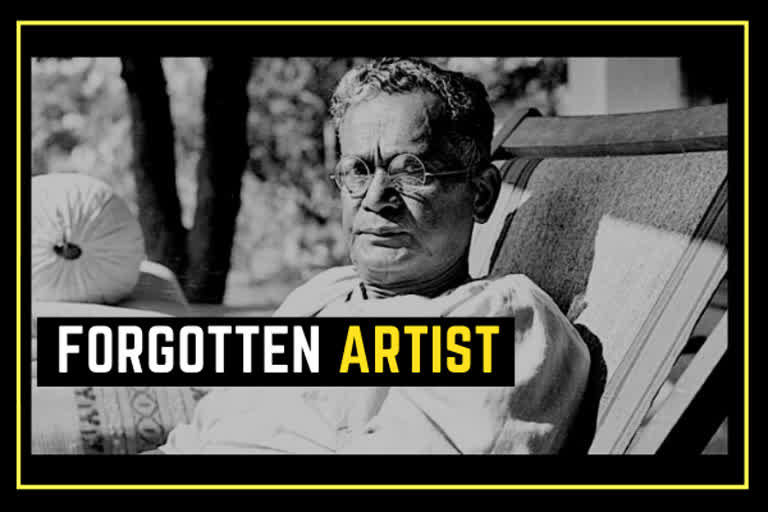Nandalal Bose was one of those painters who fought against all odds to pursue his passion which ultimately turned him into one of India's most celebrated artists of the 20th century. During his career span, Bose earned trust and respect of the Indian Government and he was assigned with some of the most distinguished projects by the Government of Independent India, including designing the pages of the Constitution. However, neither his contributions nor his creations found their way in the history books or any eminent museum.
Nandalal Bose was born on December 3, 1882, in a middle-class Bengali family of Kharagpur, in Bihar's Munger district. Although, Khetramoni Devi, his mother, who was a source of inspiration to him; died when he was just 13 years old. Picking up his mother's trait of improvising toys and dolls, Bose took an active interest in molding wet clay and decorating Durga Puja pandals.
As a young child, whenever Nandalal used to visit Kolkata, he used to stay at his grandfather's residence (known to be a rich man of his time) in Howrah, West Bengal and eventually he relocated to this place from Kharagpur. Presently, a government bus stand is being operated at his abandoned house in Kharagpur.
At the age of fifteen, Bose moved to Calcutta for his high school studies in the Central Collegiate School.
Bose wanted to study art, but he was not permitted by his family. Unable to qualify for promotion in his classes, Nandalal moved to other colleges, joining the Presidency College in 1905 to study commerce. After repeated failures, he persuaded his family to let him study art at Calcutta's School of Art.
Poet Rabindranath Tagore, in one of his brief accounts, said that Nandalal Bose was a personality who devoted his life towards work, indifferent to worldly success.
Ramcharit Singh, an English professor at Hari Singh College published a memoir of the life of Nandalal Bose in which he described his family as a middle-class Bengali family.
Singh in his book had written that Bose's father-Purna Chandra Bose, started his service as a manager under the dominion of Darbhanga Maharaj. Later, after becoming Maharaj's trustable servant, his father served as an architect to the state.
A middle school located in Haveli Kharagpur, where Bose completed his early education, has now become a dilapidated structure. Although several houses have been built around the school, the government failed to develop it as a heritage centre.
In 1903, Bose got married to Sudhira Devi, who was 12 years younger to him.
Som Prakash Pal and his family, who have been residing in the abandoned ancestral house of Bose, reiterated on the deplorable condition of the house.
"When on one hand, the government is honoring people associated with the Indian history, on the other hand, Nandalal Bose, who had contributed immensely towards the freedom movement with his artworks is lost in the oblivion, and this is extremely sad," said Pal, who shared a close bond with Bose.
He further said that, though with the efforts of the then DSP DN Gupta, a statue of Bose was installed at a chowk near his house, people should be aware of his contribution to the freedom struggle and his connection with the industrial city of West Bengal.
Bose, who left a major imprint on Indian art, completed his higher education in art and literature from Shantiniketan and subsequently, he started educating people about the same.
Simultaneously, Indira Gandhi who was greatly influenced by Bose's art and literature enrolled herself into the same course of the institution. He then took charge of Gandhi's education and started grooming her.
Mahatma Gandhi and Jawaharlal Nehru who frequently visited Shantiniketan were among the admirers of his work.
In 1947, Nehru, who became Prime Minister of independent India, entrusted Bose with the task illustrating the pages of the Constitution after its formation.
People generally know about Baba Saheb Ambedkar, the author of our constitution, but very few know about the man who illustrated the Constitution of India. Nandalal’s contribution towards Indian art is immense, for which he was honored with Padma Vibhushan by the Government of India in 1954.
ALSO READ: Know more about your Constitution!



